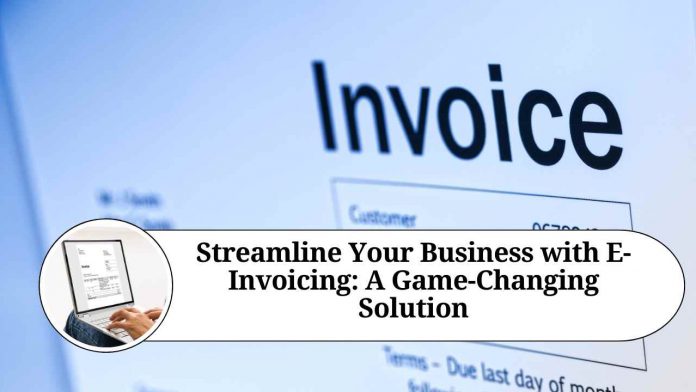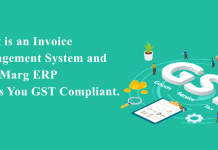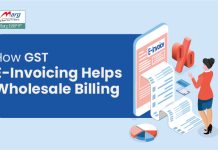Introduction
In the digital era, businesses of all sizes are constantly seeking innovative solutions to enhance their operational efficiency and reduce costs. One such solution that has gained tremendous popularity in recent years is electronic invoicing, commonly known as e-invoicing. This groundbreaking technology revolutionizes the way businesses generate, send, receive, and process invoices, bringing a myriad of benefits that can transform your financial processes. In this blog, we will delve into the world of e-invoicing and explore the numerous advantages it offers to businesses.
Understanding E-Invoicing:
E-invoicing refers to the automated exchange of invoice data between buyers and suppliers in a standardized electronic format. Unlike traditional paper-based invoices, e-invoicing eliminates the need for manual data entry, paper handling, and postage costs. Instead, invoices are generated, transmitted, and received electronically, seamlessly integrating with the financial systems of both parties.
The Benefits of E-Invoicing:
2.1. Time and Cost Savings: By eliminating manual processes, e-invoicing saves businesses significant amounts of time and money. With automated data entry, invoice creation becomes faster and more accurate, reducing the risk of errors and costly rework. Additionally, businesses no longer need to spend resources on printing, mailing, or storing physical invoices, resulting in substantial cost savings over time.
2.2. Improved Efficiency and Accuracy: E-invoicing minimizes human intervention, reducing the likelihood of errors that often occur during manual data entry. This enhanced accuracy translates into faster processing times, accelerated payment cycles, and improved cash flow management. Moreover, e-invoicing enables real-time visibility into invoice status, ensuring better tracking and transparency throughout the payment process.
2.3. Enhanced Supplier and Customer Relationships: E-invoicing fosters stronger relationships with suppliers and customers by streamlining communication and collaboration. With automated systems in place, invoices are delivered promptly and consistently, reducing delays and enhancing overall satisfaction. Furthermore, e-invoicing enables better dispute resolution, as all invoice-related information is readily available for quick reference and resolution.
2.4. Regulatory Compliance: Many countries have implemented or are moving towards mandatory e-invoicing as part of their tax reforms. By adopting e-invoicing, businesses can ensure compliance with evolving regulations, avoiding penalties and legal complexities. E-invoicing solutions often integrate with tax authorities’ systems, facilitating seamless submission of tax data and minimizing compliance-related burdens.
Implementing E-Invoicing:
To harness the benefits of e-invoicing, businesses can follow these essential steps:
3.1. Evaluate and Choose the Right E-Invoicing Solution: Assess your business needs, existing systems, and infrastructure to determine the most suitable e-invoicing solution. Consider factors such as scalability, integration capabilities, security features, and user-friendliness before making a selection.
3.2. Plan and Prepare for Implementation: Develop a detailed implementation plan, including timelines, resource allocation, and training requirements. Collaborate with your IT department and chosen e-invoicing solution provider to ensure a smooth transition and integration with your existing systems.
3.3. Communicate and Engage Stakeholders: Effective change management is crucial for successful e-invoicing implementation. Communicate the benefits of e-invoicing to your suppliers, customers, and internal stakeholders, addressing any concerns and providing the necessary training and support.
3.4. Test and Rollout: Thoroughly test the e-invoicing solution in a controlled environment before rolling it out across your organization. Monitor the implementation closely, gather feedback, and make any necessary adjustments to optimize the system’s performance.
Read more useful content:
Frequently Asked Questions (FAQs)
Q. What is e-invoicing?
E-invoicing, or electronic invoicing, is the automated exchange of invoice data between buyers and suppliers in a standardized electronic format. It eliminates the need for manual processes and paper-based invoices, streamlining the generation, transmission, and processing of invoices.
Q. How does e-invoicing work?
E-invoicing works by utilizing electronic formats, such as XML or EDI, to exchange invoice data between the invoicing system of the seller and the buyer’s financial system. The invoices are generated electronically, transmitted securely, and integrated seamlessly with the financial systems of both parties.
Q. What are the benefits of implementing an e-invoicing solution?
Implementing an e-invoicing solution offers several benefits, including:
Time and cost savings through automation and elimination of manual processes.
Improved efficiency and accuracy by reducing errors and speeding up invoice processing.
Enhanced supplier and customer relationships through streamlined communication and faster payment cycles.
Regulatory compliance by aligning with mandatory e-invoicing requirements.Real-time visibility into invoice status and better tracking of payments.
Q. Is e-invoicing secure?
Yes, e-invoicing solutions prioritize security to protect sensitive invoice data. Encryption techniques, secure transmission protocols, and data access controls are implemented to ensure the confidentiality and integrity of the information exchanged between parties.
Q. Can e-invoicing be integrated with existing accounting systems?
Yes, most e-invoicing solutions are designed to integrate seamlessly with existing accounting systems. They can be customized to fit specific business needs and are compatible with popular accounting software, allowing for a smooth integration process.
Q. How does e-invoicing improve cash flow management?
E-invoicing enables faster invoice processing and reduces payment cycles. Businesses can monitor invoice status in real time, allowing them to follow up on outstanding payments promptly. This enhanced visibility and speed of processing contribute to improved cash flow management.
Q. Is e-invoicing mandatory?
E-invoicing is becoming increasingly mandatory in many countries as part of their tax reforms. The specific requirements and deadlines vary from one jurisdiction to another. Businesses should stay informed about local regulations and comply with any mandates relevant to their operations.
Q. Can e-invoicing be used for international transactions?
Yes, e-invoicing can be used for both domestic and international transactions. However, it is important to ensure compliance with international invoicing standards and take into account any specific legal or regulatory requirements of the countries involved.
Q. How does e-invoicing contribute to sustainability?
E-invoicing eliminates the need for paper-based invoices, reducing the consumption of paper, printing, and postage. By going digital, businesses can contribute to environmental sustainability and reduce their carbon footprint.
Q. What are the implementation steps for e-invoicing?
Implementing e-invoicing involves several steps, including evaluating and selecting the right e-invoicing solution, planning for implementation, communicating with stakeholders, testing the solution, and rolling it out across the organization. Each step should be carefully planned and executed to ensure a successful implementation.




















